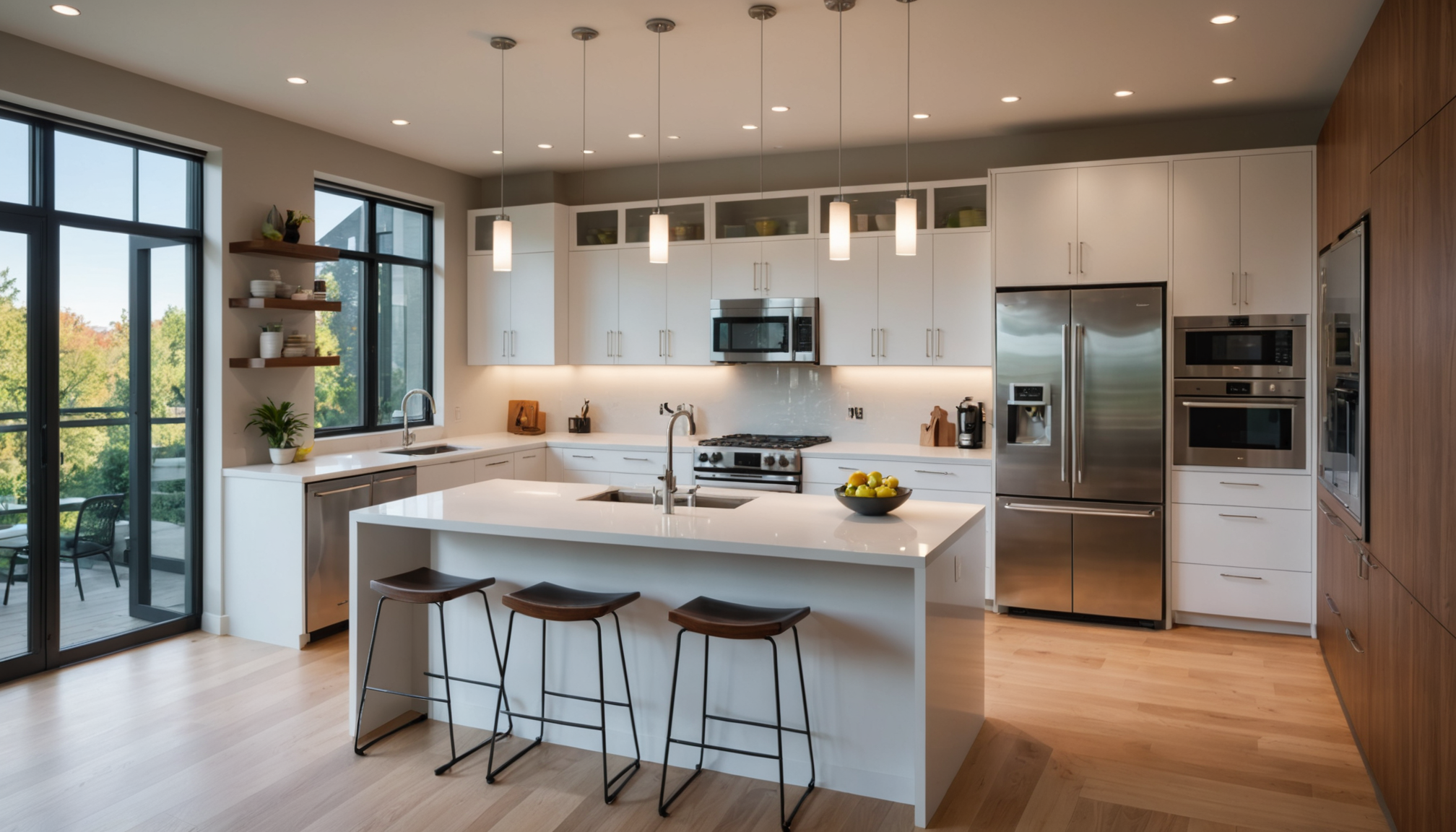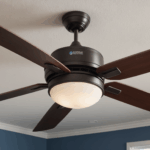Before embarking on a kitchen renovation journey, assessing your current kitchen space is a vital first step. A comprehensive evaluation will not only inform your design choices but also help set realistic expectations for the project. Begin with a careful observation of your kitchen’s condition and functionality, noting what aspects work well and what require improvement.
Start by considering the flow and layout of your kitchen. Ask yourself if it supports efficient movement and activity during meal preparation and clean-up. The classic kitchen work triangle—linking the sink, stove, and refrigerator—is a timeless layout approach that enhances the functionality of your space. However, modern kitchen designs might benefit from open plans or islands to accommodate evolving household needs. Evaluate whether your current layout aligns with your day-to-day kitchen use and if it incorporates elements like windows that enhance natural light and ventilation.
Next, focus on the materials utilized in your existing kitchen. Cabinets, countertops, and flooring often bear the brunt of daily use. Are they showing signs of wear and tear? Are they made from durable materials, or are you inclined to replace them with more resilient options? Consider materials that align with both your aesthetic preferences and functional requirements. For instance, sleek quartz countertops or hardy hardwood floors could offer both beauty and longevity, adding a modern touch to your space.
Examine your kitchen’s storage solutions. Ample storage is essential for maintaining an organized and clutter-free environment. Consider if your current cabinets, pantries, and shelves are maximizing space effectively. Implementing smart storage solutions like pull-out drawers or modular cabinets could significantly increase usability. Are there opportunities to expand or improve on what you currently have?
Lighting is another critical element in evaluating your kitchen. Adequate lighting improves visibility and ambiance, making cooking more enjoyable and reducing the risk of accidents. Assess whether your current lighting fixtures provide enough illumination for all areas. Do modern fixtures or smart home systems offer potential upgrades? Incorporating energy-efficient LED lights can reduce energy consumption while providing adequate brightness.
An assessment wouldn’t be complete without considering the appliances and fixtures. These elements must be functional and energy-efficient. Review whether they serve your needs and are compatible with smart home technologies. For example, a smart refrigerator or a programmable stove may provide conveniences that your existing appliances lack.
Finally, assess your kitchen’s overall style to ensure it reflects your taste while adding value to your home. Consider whether integrating modern stylistic elements or maintaining a traditional look aligns better with your vision. Such changes may involve significant updates or just subtle improvements.
To help in this process, use the following comparison table to note current features that will guide your kitchen renovation:
| Feature | Current Status | Desired Changes |
| Layout | Traditional triangle, limited space | Open concept, add an island |
| Materials | Laminate countertops, vinyl flooring | Quartz countertops, hardwood flooring |
| Storage | Basic cabinets, limited pantry space | Custom cabinetry, pull-outs, expanded pantry |
| Lighting | Fluorescent overhead, minimal task lighting | LED fixtures, task and ambient lighting |
| Appliances | Outdated and non-smart compatibility | Energy-efficient, smart integrations |
| Style | Traditional, dated | Contemporary, modern finishes |
These insights will lay the foundation for a thoughtful kitchen transformation that meets functional demands while embodying personal style.
planning your new layout
Once you’ve thoroughly assessed your current kitchen, it’s time to embark on the journey of planning a new layout that better suits your lifestyle and preferences. This crucial step transforms your initial insights into actionable plans, ensuring a more functional and aesthetically pleasing kitchen. Follow these steps to create an effective kitchen layout:
- Determine Your Kitchen Style: Decide on a style that seamlessly fits with the rest of your home and personal taste. Whether you’re drawn to a sleek, modern kitchen with clean lines and smart home solutions or prefer a more traditional approach with rustic charm, having a clear vision will guide your choices throughout the process.
- Choose a Layout Type: Common kitchen layouts include L-shaped, U-shaped, galley, and open-concept designs. Consider factors like space availability, how you move within the kitchen, and if you’d like to include features such as an island or breakfast bar. For smaller spaces, a galley or one-wall kitchen might be efficient, whereas larger areas can benefit from an open-concept layout.
- Define Work Zones: Modern kitchens often go beyond the traditional work triangle, opting for work zones dedicated to specific activities. Identify areas for food preparation, cooking, baking, and clean-up. Ensure that these zones have the necessary appliances and storage solutions within easy reach.
- Incorporate Storage Solutions: Storage is integral to maintaining a clutter-free kitchen. Central to planning is a strategy for organizing your kitchen efficiently. Consider vertical storage, lazy Susans, deep drawers, and pull-out pantry systems to maximize space. These solutions should align with your style, whether opting for open shelving to showcase dishware or concealed cabinets for a minimalist aesthetic.
- Plan for Natural Light: Utilize existing kitchen windows to enhance natural light, creating an inviting and vibrant atmosphere. If the current setup doesn’t maximize light, consider design alterations like adding windows or skylights. This not only improves aesthetics but also energy efficiency by reducing dependence on artificial lighting.
- Factoring in Utility Connections: Before finalizing your plan, ensure that plumbing, electrical, and gas connections accommodate your layout. It’s essential that these systems support your appliances and fixtures without requiring extensive reconfigurations, as this can impact both your timeline and budget.
- Experiment with Technology and Smart Home Features: Explore smart home enhancements that integrate with your kitchen layout. Automated lighting, smart ovens, and voice-activated faucets can enhance convenience and efficiency. The layout should allow for the incorporation of such technologies smoothly, offering both enhanced functionality and future-proofing your space.
- Visualize the Space: Use design software or consult with a professional to create virtual models of your new kitchen layout. This will help you visualize how changes will look and feel, allowing you to make informed decisions and adjustments before any physical work begins.
- Gather Feedback and Finalize: Share your layout plan with family members or friends who frequently use the kitchen to gather feedback. A fresh perspective might offer valuable insights or highlight aspects you’ve overlooked. Once satisfied, finalize the layout, ensuring it meets both functional needs and aesthetic goals.
Engaging in thorough and detailed planning during the design phase ensures a smooth renovation process and results in a kitchen that is not only functional but also a joy to use.
choosing the right materials
When it comes to reinventing your kitchen, choosing the right materials plays a pivotal role in both the visual appeal and functionality of the space. The materials you select will not only dictate the aesthetics but also influence the long-term durability and maintenance of your kitchen. Thus, it’s essential to make well-informed decisions that align with your lifestyle and style preferences.
Start by considering countertops, as they are a central feature in your kitchen, often acting as a visual anchor that ties the entire design together. Options such as quartz offer a perfect blend of durability and elegance, being resistant to scratches and stains while providing a sleek and modern look. Granite is another robust choice, known for its unique natural patterns and heat resistance, ideal for vigorous cooking practices. If you are seeking options that support a sustainable lifestyle, recycled glass or composite countertops might be the ideal solution, offering both eco-friendliness and contemporary aesthetics.
Cabinetry is equally crucial in defining your kitchen’s personality. Opt for materials that ensure longevity and suit your style. Classic wood cabinets provide warmth and timeless appeal, but if you’re leaning towards a modern style, high gloss or acrylic finishes can offer a clean, sharp look that reflects light beautifully. For a more cost-effective yet durable option, consider thermofoil cabinets, which are easy to clean and maintain.
Flooring is another fundamental aspect where functionality meets design. Hardwood floors are a popular choice for those wanting to bring an element of natural beauty to the kitchen. They are versatile and can complement both traditional and modern styles. Alternatively, if you’re dealing with high foot traffic or are concerned about wear and tear, tiles could be a practical solution. These are available in a vast array of colors and designs, including those that mimic hardwood, and provide excellent durability against spills and frequent cleaning.
When it comes to backsplashes, they offer a fantastic opportunity to showcase personal flair while protecting your walls. Glass tiles can provide a sparkling and reflective surface, enhancing natural light and adding a touch of sophistication to the kitchen. Subway tiles, particularly in sleek finishes, provide a timeless element that complements various design styles from rustic farmhouse to urban chic. For something unique, consider metal backsplashes, which offer an industrial feel and are incredibly easy to clean.
Don’t forget to factor in the hardware, such as handles and knobs, as they add final decorative touches that can enhance the kitchen’s overall theme. Choices range from elegant brushed nickel for a classic look to bold matte black for a contemporary appeal.
Finally, consider environmental impacts and sustainability. Many homeowners today prioritize materials that reduce their carbon footprint. Seek options that employ sustainable practices, such as bamboo or reclaimed wood, which offer both a distinctive character and eco-friendliness.
By combining thoughtful material choices with your kitchen’s design concept, you end up creating a space that is not only practical but also brings joy and satisfaction every time you step inside. Your choice of materials serves as the foundation for a kitchen that aligns seamlessly with modern living, while setting the stage for delightful culinary experiences.
selecting appliances and fixtures
When embarking on the process of selecting appliances and fixtures, consider how each item complements the overall design and functionality of your new kitchen space. Modern kitchens often become the heart of the home, serving as both a functional workspace and a vibrant social hub. Therefore, choosing the right appliances and fixtures plays a critical role in achieving a seamless blend of style and efficiency.
Begin by evaluating your cooking habits and lifestyle needs to determine the essential appliances. If you’re a culinary enthusiast who enjoys experimenting with different cuisines, investing in a high-performance range or a double oven might be worthwhile. Alternatively, a minimalist setup with essential appliances such as an efficient fridge, a cooktop, and a smart microwave could suffice for those who prefer quick and simple meal preparations. Look for appliances that offer energy efficiency, not only to lower utility bills but also to contribute towards a sustainable home. Many modern appliances come with Energy Star ratings, which can guide you in making environmentally conscious choices.
Refrigerators, a cornerstone in any kitchen, come in various styles and sizes. Features like French doors, bottom freezers, and built-in models allow you to choose based on your aesthetic preference and space availability. Moreover, consider smart refrigerators that offer innovations such as internal cameras, voice-activated assistants, or touch screens, all of which can streamline how you manage your groceries and meal planning.
When it comes to dishwashers, prioritize noise levels, washing capacity, and eco-friendly options. A quiet model with adjustable racks enhances convenience, especially in open-plan homes where kitchen noise carries into living spaces.
As for fixtures, your choice should enhance both functionality and aesthetics. Modern faucets with pull-down sprayers or touchless activation provide convenience and hygiene, while designs in brushed nickel, matte black, or polished chrome can significantly elevate your kitchen’s look. Remember also to consider the sink—a cohesive design pairs it well with your chosen faucet. Whether you opt for a farmhouse, undermount, or integrated sink, ensure it accommodates your cooking and cleaning needs.
Lighting fixtures are another important consideration. Choose a combination of ambient, task, and accent lighting to create a well-lit kitchen perfect for culinary tasks. Recessed lights, pendant fixtures, and under-cabinet lighting each have their roles, contributing to an inviting and efficient environment.
Don’t overlook the smaller details such as cabinet pulls, knobs, and other hardware. These finishing touches can dramatically influence the room’s overall visual appeal. Matched to your kitchen’s style—whether modern, rustic, or transitional—these elements complete the curated look of your kitchen.
Lastly, incorporate smart home technologies where they offer true value and convenience. Smart ovens, which can be preheated via mobile device, or intelligent lighting systems that adjust brightness with a simple voice command, can add convenience and sophistication to your kitchen.
By thoughtfully selecting appliances and fixtures, you ensure that your kitchen isn’t just a utility space, but rather a modern, cohesive, and welcoming environment that truly caters to your lifestyle. This attention to detail will provide long-term satisfaction as you enjoy both everyday functionality and the pleasure of your enhanced kitchen ambiance.
budgeting and timeline management
Developing a comprehensive budget and timeline is crucial to a successful kitchen renovation. Begin by realistically assessing the scale of your project and setting a budget that includes all the key elements such as materials, appliances, labor, and contingencies. Consider the cost of not only purchasing new items but also disposing of old ones, along with any unexpected expenses that may arise during the renovation process.
A well-structured budget starts with obtaining detailed quotes from contractors and suppliers. Don’t hesitate to get multiple estimates to ensure competitive pricing. Factor in the cost differences in materials—high-end options like quartz and hardwood, for instance, will be more expensive than laminate or vinyl. Appliances also greatly vary in cost, particularly with modern enhancements such as energy-efficient or smart home models.
When planning your budget, it’s important to prioritize essential upgrades that will have the most impact on your kitchen’s functionality and value. You might decide to allocate a larger portion of the budget to high-traffic areas like countertops and flooring, which see the most wear and tear. Additionally, consider the long-term savings that energy-efficient appliances can offer, even if their initial cost is higher.
It’s wise to set aside a contingency fund of at least 10-20% of your total budget to cover unanticipated issues or changes to your plan. This financial buffer allows for flexibility during the renovation without disrupting the overall progress.
Alongside budgeting, outline a realistic timeline that accommodates each phase of the renovation. Begin with the planning and design stage, then move through demolition, installation, and final touches. Timelines can vary significantly depending on the project scope, but having a clear schedule helps manage expectations and minimize downtime.
Coordinating with professionals is key to maintaining your timeline. Ensure that deliveries of materials and appliances are scheduled well in advance, and confirm the availability of key personnel like contractors, electricians, and plumbers. Flexibility is important; however, maintaining clear communication with your team helps address any changes promptly.
Consider that some parts of the renovation, such as installing countertops or custom cabinetry, may take longer due to their bespoke nature. It’s also beneficial to account for potential delays from issues such as weather or supply chain disruptions, especially when waiting for specific fixtures or materials to arrive.
Be prepared for potential lifestyle adjustments during the remodel, especially if it will impact your main cooking area. Setting up a temporary kitchen station with basic essentials can alleviate inconvenience and keep your household running smoothly.
By implementing diligent budgeting and timeline management, you not only mitigate stress but also ensure a smooth, organized renovation process that achieves your vision of a modern and efficient kitchen. These preparatory steps are vital in transforming your space into a dream kitchen that perfectly suits your needs while adding significant value to your home.
In conclusion, replacing your kitchen is an exciting yet intricate journey that requires careful planning and consideration. From assessing the current space and designing a new layout to selecting the right materials, appliances, and managing your budget and timeline, each step plays a vital role in crafting a kitchen that reflects your lifestyle and aesthetic preferences. With meticulous attention to detail and strategic planning, your new kitchen will not only enhance your home but also serve as a modern, functional hub that meets your everyday needs and aspirations.


